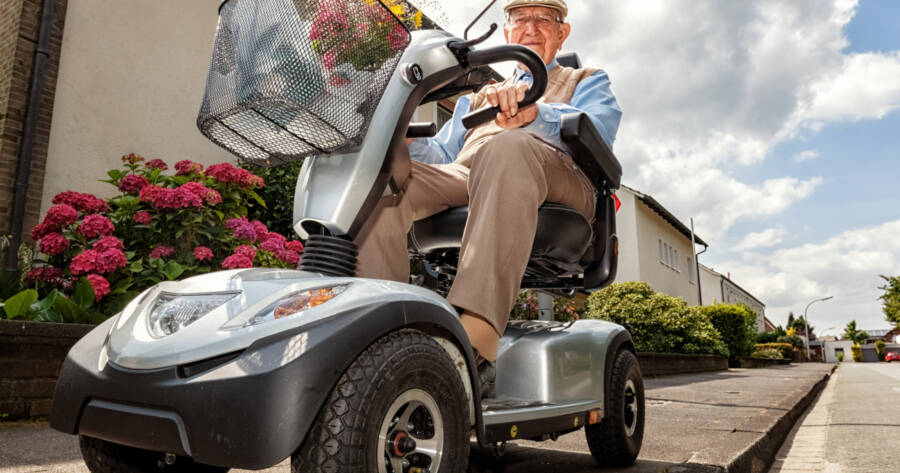Learn how to you may be able to get your mobility scooter partially covered by Medicare. Understand eligibility criteria, required documentation, and the application process to ensure you receive the support and coverage needed for enhanced mobility and independence.
1. Understand Medicare’s Requirements
Before anything else, you need to understand what Medicare looks for when evaluating the need for a mobility device. Medicare Part B typically covers power-operated vehicles such as scooters, but only under specific conditions.1
The primary requirement is that you must have a doctor or treating practitioner who certifies the medical necessity of the scooter for daily living.
2. Consult with a Healthcare Professional
Medicare won’t just take your word for it; a consultation with a healthcare professional is mandatory. Schedule an appointment with your physician or an authorized practitioner.
They need to assess your mobility needs and confirm that a mobility scooter is essential for your health and safety. This step is crucial as your doctor will provide a written order or prescription, which you’ll need for the next steps.
3. Documentation is Key
Make sure to maintain thorough documentation. This includes:
- The written order from your doctor, which should mention why the scooter is necessary, how long you’ll need it, and a detailed description of the scooter itself.
- Any related medical records, including reports that detail your mobility limitations and how they impact your day-to-day life.
- Receipts of any payments made towards the scooter, even if you’re only partially covering the costs.
4. Choose a Medicare-approved Supplier
After getting the doctor’s order, you must choose a supplier enrolled in Medicare. It’s essential to go with a Medicare-approved supplier because only they can bill Medicare directly. If you mistakenly choose a non-approved supplier, you may end up paying the full price out-of-pocket.
5. Submit the Required Paperwork
Once you have all the necessary documentation and have chosen a supplier, it’s time to submit your paperwork. Your chosen supplier can guide you through this process.
Typically, you’ll provide them with the doctor’s written order, your Medicare information, and any other required documentation. They will then submit a claim to Medicare on your behalf.
6. Understand Your Coverage and Costs
If Medicare approves your claim, they may cover as much as 80% of the Medicare-approved amount after you’ve met your Part B deductible. You or your supplemental insurance will need to cover the remaining 20%.2 Make sure you’re aware of figures so there are no unexpected costs. If your claim is denied, you have the right to an appeal.
7. Maintenance and Repairs
Once you’ve got your mobility scooter, understand that Medicare also covers repairs and maintenance. If the scooter breaks down or needs servicing, contact your supplier. They should be able to bill Medicare for costs, but again, ensure they’re an approved supplier to avoid unexpected bills.
8. Stay Updated on Policy Changes
Medicare policies can and do change. Stay informed about any potential changes to ensure you continue to receive the benefits you’re entitled to. Joining a Medicare newsletter or setting up notifications for policy changes related to mobility aids can be beneficial.
9. Renewal and Replacement
Over time, your mobility needs might change, or your scooter might wear out. Fortunately, Medicare takes this into consideration. If your current scooter no longer fits your needs or if it’s become irreparably damaged, you might qualify for a replacement. However, Medicare usually has a lifespan expectation for each mobility device, often around five years.
10. The Importance of Safety Training
While Medicare focuses heavily on the medical necessity of a mobility scooter, it’s equally crucial to ensure you can operate it safely.3 Some suppliers offer training sessions or tutorials to help new users become acquainted with their devices:
- Ask your supplier if they provide any training or orientation sessions.
- Look for online resources or community centers that might offer safety courses for mobility scooter users.
- Remember, being comfortable and safe with your scooter not only ensures your well-being but can also prevent potential damages or repairs in the future.
Find Help Today!
In the quest for improved mobility, a scooter can be transformative. However, understanding the procedures of Medicare can be a real chore. We hope this guide has shone a light on the path towards getting your mobility scooter partially covered. As always, the intricacies of policies and individual cases can vary. Thus, it’s crucial to delve deeper into the specifics to ensure a smooth journey to regaining your mobility.
